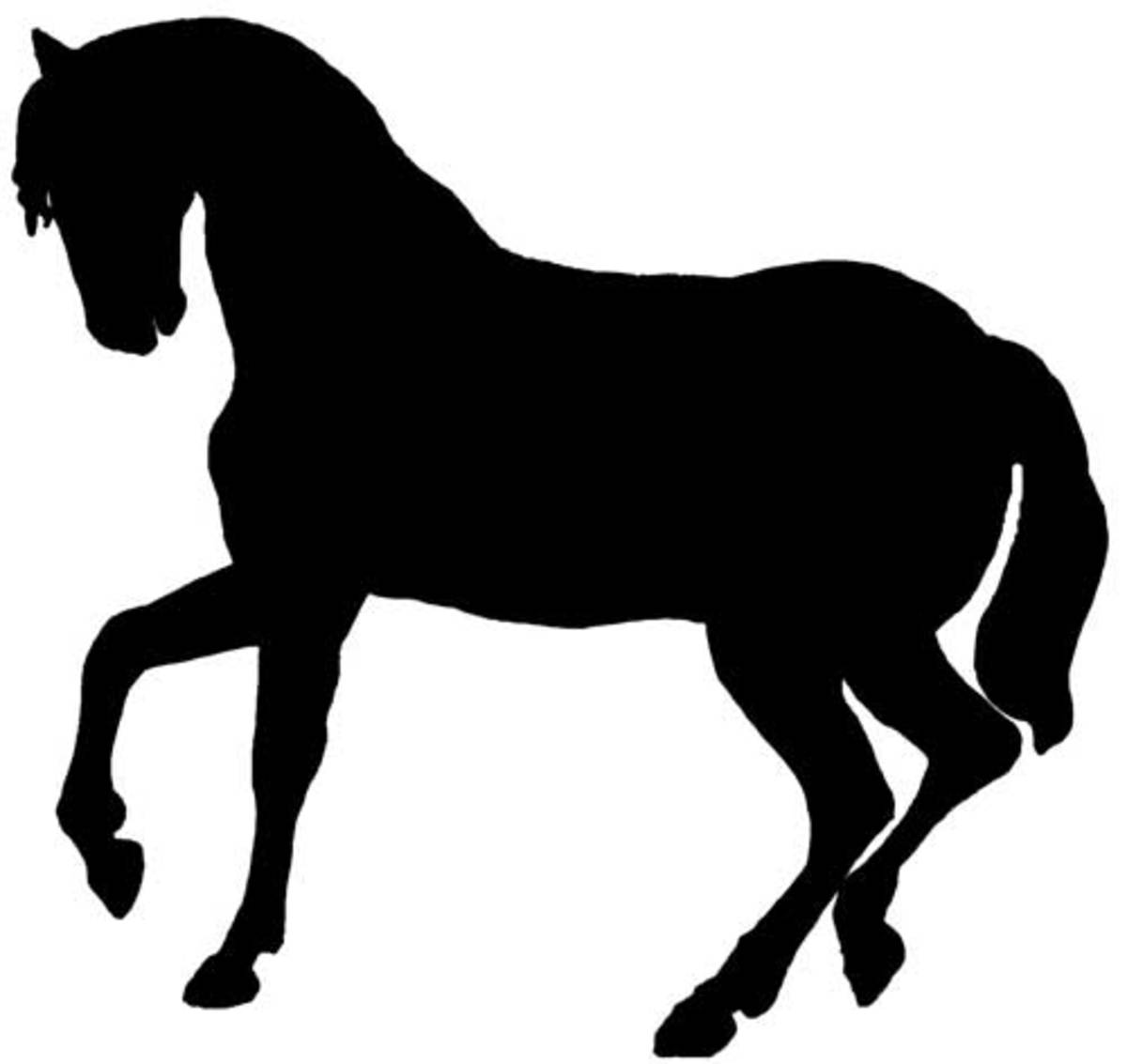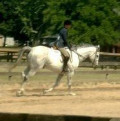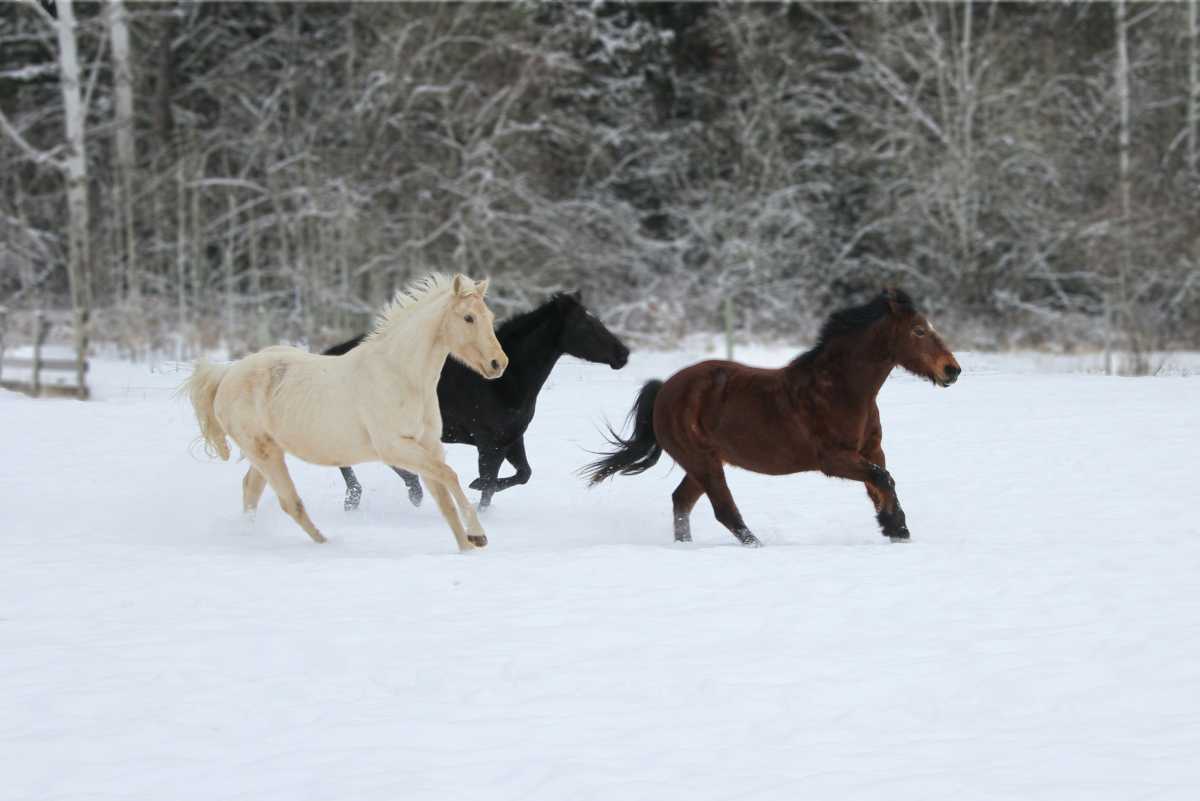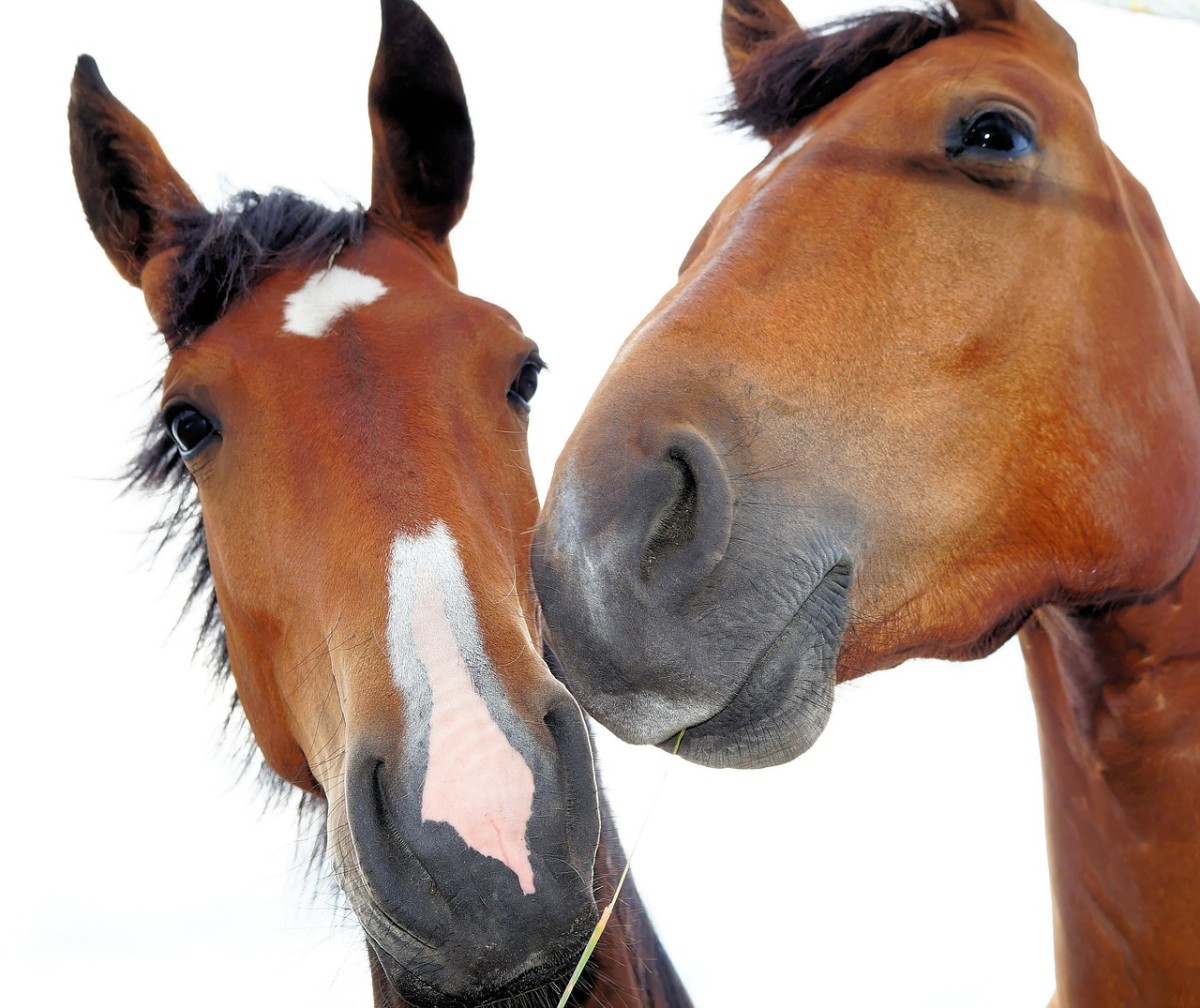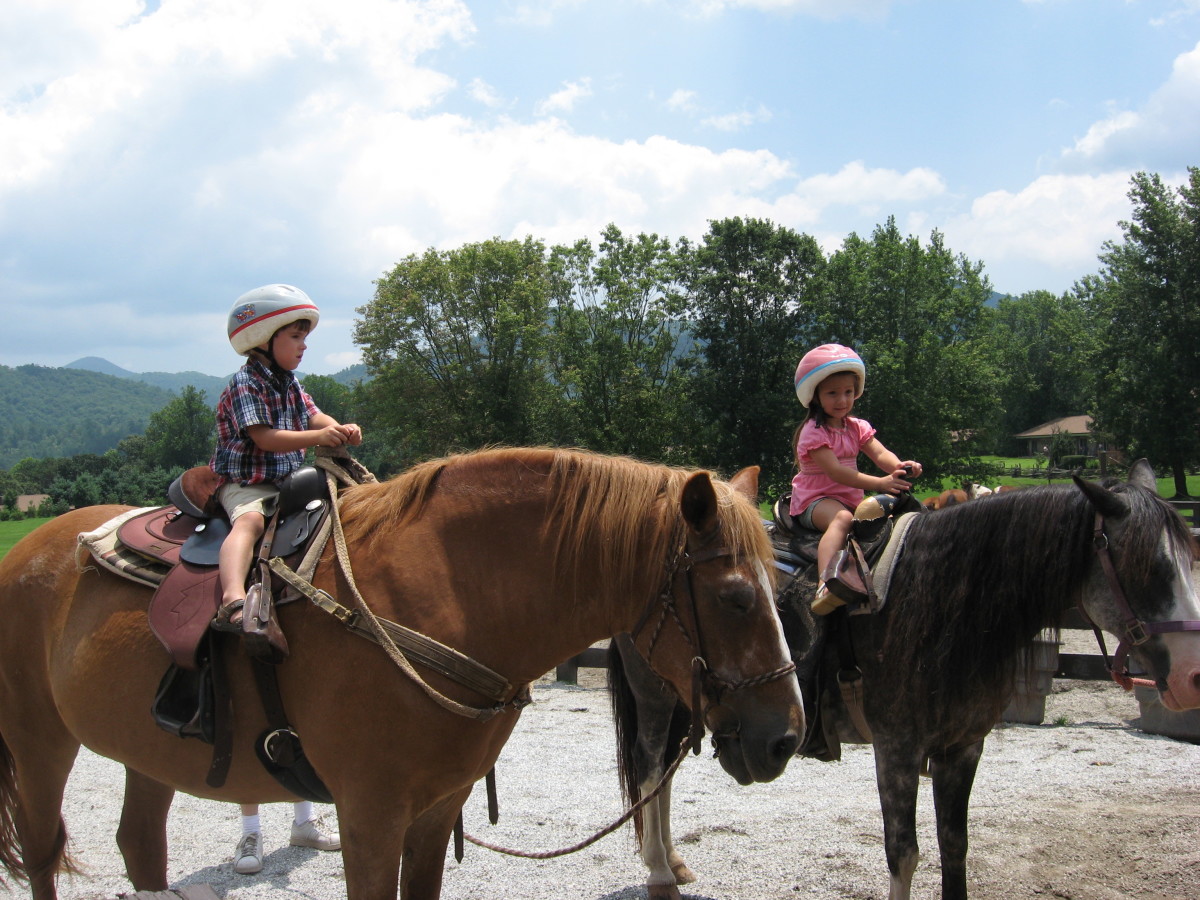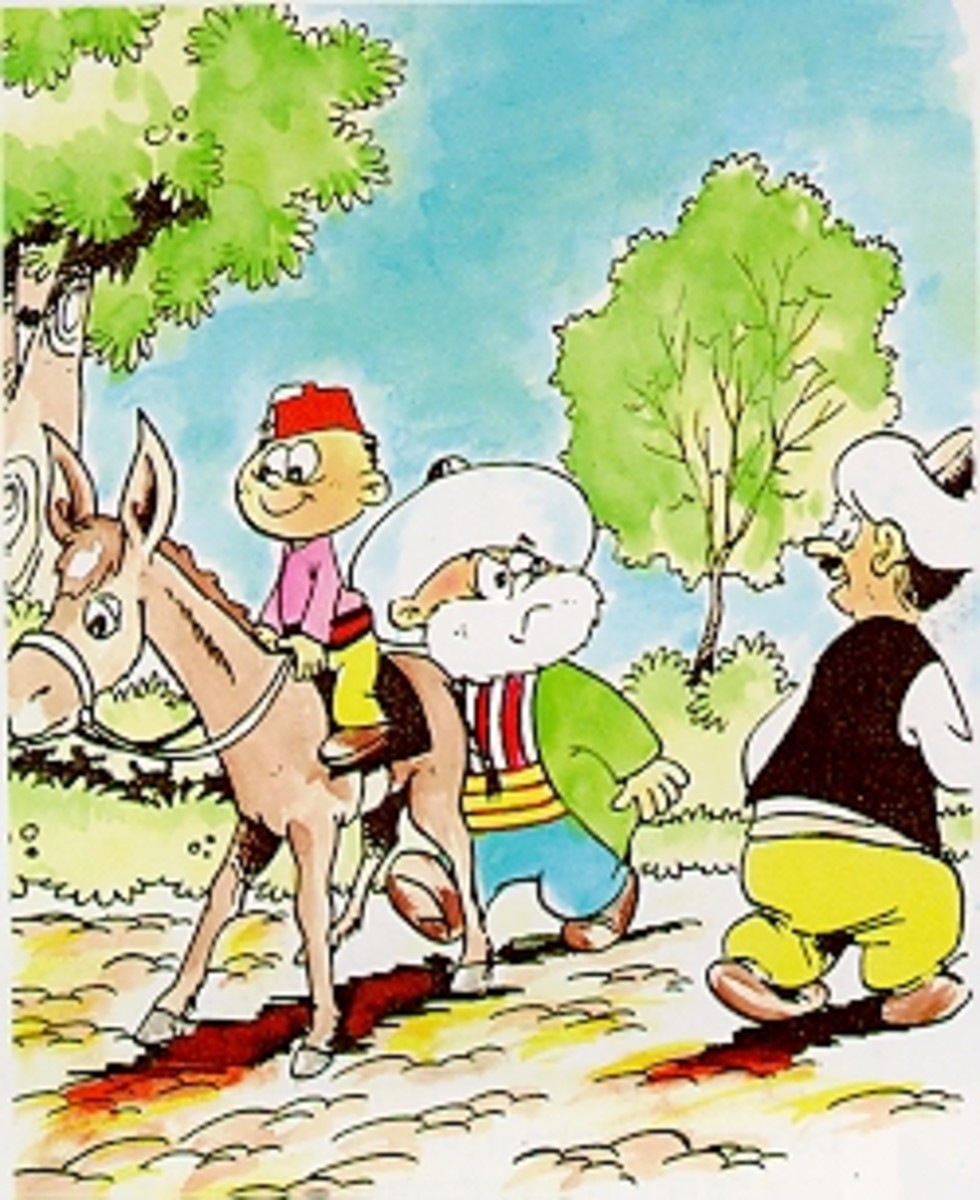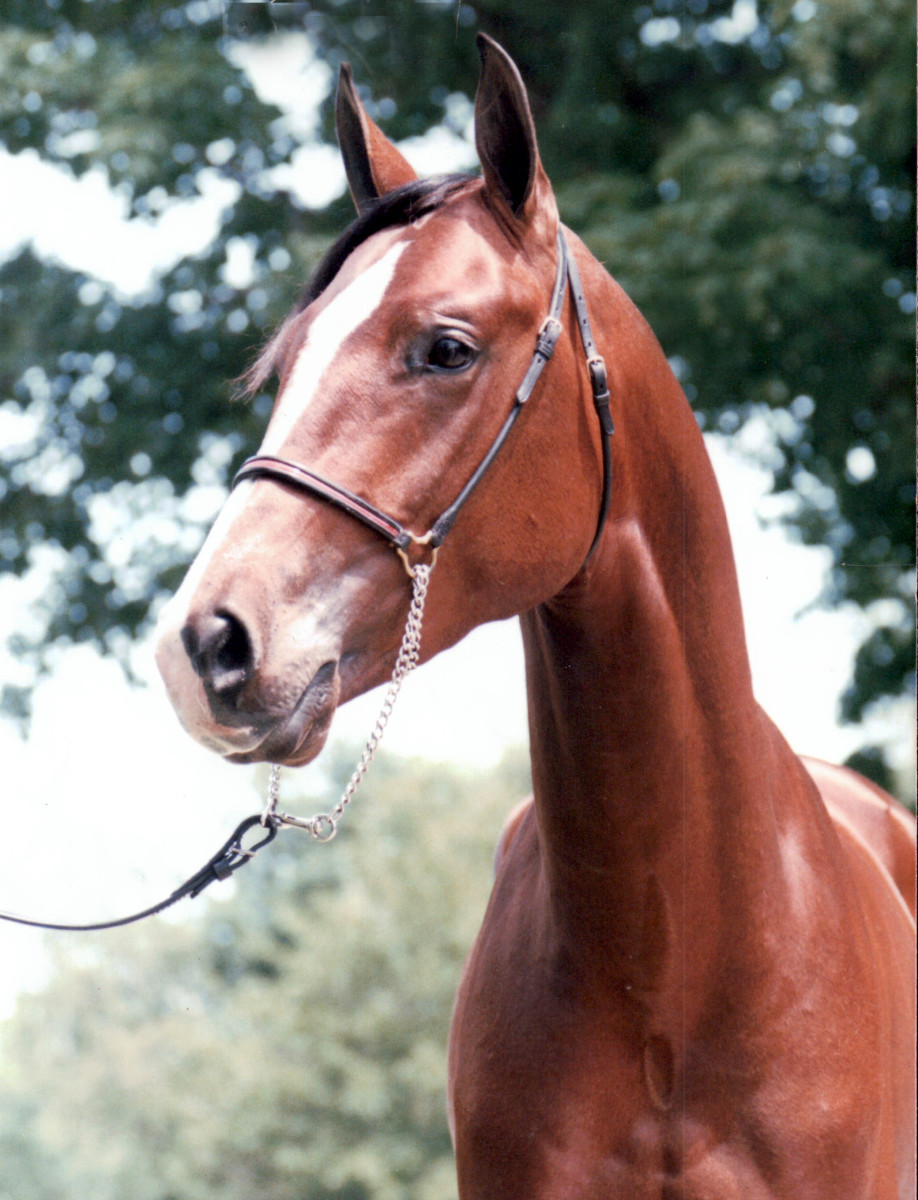Horse Stalls Building the horse stall to match the horse
Horses are a passion of people from all walks of life. The blue jeans, boots, and tee-shirts lack the normal “badges” that are assigned to people based on their livelihoods. Out at the barn everyone comes to just focus on the four legged creature simply dubbed, “the horse”. Of course horse barns have horse stalls. From fancy to simple, portable horse stalls to permanent, there are a wide variety of horse stalls to choose from.
No matter what type of barn or breed of horse to be accommodated in a stall, there are some safety issues and construction standards that should be considered from the very beginning.
Horse Stall Design- width
When building a horse barn, the site should be very level. A good excavator is capable of making a site that is plus or minus just a few inches. A nice layout for a barn is an aisle down the center and a row of stalls on each side. The best measurements are to allow a width of 12 feet for each row of stalls and then a 16 to 20 foot wide aisle down the center. That would make the barn a minimum of 40 feet wide.
Let’s first focus on the width of the horse stall. A 12 foot wide stall accommodates a brood mare, quarter horse, warm blood, or thoroughbred. A stall can always be made longer, but the width must be addressed when designing the barn. One of the most dangerous things that can happen in a stall is for a horse to become “cast”. A horse gets cast when they roll all the way over and get their legs and hooves trapped against the wall. They do not have enough space to push away and get up. In this locked position they are quite literally stuck. To get a horse out of this predicament, it usually requires two people. One person puts a halter and a lead rope on the horse’s head and the other person loops a lead rope over the back leg. Then together they carefully roll the horse back over to the original side. A horse becoming cast can result in a horse getting skinned, cut or even worse. Sometimes the horse will even twist their intestine and colic. Good wide stalls can reduce this chance of casting.
A great overall size for stalls is 12 feet by 12 feet. The 12x12 construction is wide, can accommodate the big horses, but is not so wide as to actually waste space. The length of a stall can be varied, depending on the horse. For a foaling stall or stallion stall adding another 6 feet to the stall can be helpful. A mare and foal produce a lot of extra stall cleaning. By having more room, it allows more area for the pair. Foals need a lot of handling in the beginning. A larger stall yields the room needed to work with the baby and still have the mare right there.
Because stallions are many times stabled for much of the time, a larger stall can be helpful to them. It gives them more room to move around. Again, an additional six feet to the stall is ideal.
Another advantage to choosing to add six feet to the standard length of twelve feet allows for the stall to be built with a somewhat temporary end wall. Then in the event of needing more stalls and the absence of a stallion, the stall wall can be returned to the 12 foot size. When accommodating a mare and foal, once the foal is weaned, the wall can be moved to the 12 foot setting and the mare and foal can each have a stall. In the very beginning of weaning, some professionals recommend placing the mare and foal in separate stalls but located right next to each other. Then the foal has a chance to adjust to not being with it’s mother, but still within sight of her.
Having access to a larger stall is also very handy if a horse becomes injured. In the case where a horse has to be stabled for a few months, having just a little more room can help to reduce the stress of extended stabling.
For very small ponies, a 6’x12’ stall is acceptable. So being able to adjust the stalls can help accommodate more horses when needed.
Movable partitions between stalls can be constructed a few different ways. One way is a slip board set up. The boards are slid in from one end into a channel on the other side of the stall. Then the boards are screwed into place at the other end. When the barn is under construction, it is not hard to add the channels every 6 feet so that walls can be moved or adjusted as needed. The 2x4 channels are flush with the wall and do not present any danger to the horse if left without a wall inserted into the channel. But note there should not be any hardware exposed that a horse could come into contact with. It is wise to cover the channel with wire or a metal plate to keep horses from chewing the channel.
Professional Horse Stalls
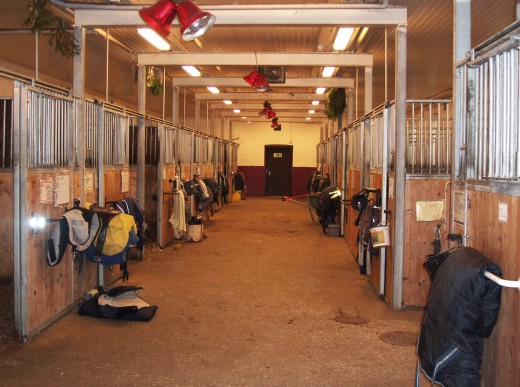
Horse Stall Design
Once a barn is designed, then comes the choice of stalls. Stalls can be built right into the barn, purchased as kits, or portable horse stalls can be utilized.
When building stalls treated 4x4 posts can be set on the corners of the stall and halfway down the side of the stall. Then 6 foot long or 12 foot long boards screwed to them. Careful attention should be paid that there is not a gap between the ground and the bottom stall board. If the ground slopes even a little, there can be a resulting hole under the wall. A hole such as that can leave room for a horse’s leg to get caught and broken. It is upsetting to see brand new beautiful barns built by general contractors who have no horse knowledge. As the barn owner or the horse owner, attention should be paid that a gap is covered. Either the level of the ground has to be raised in the lower area or a the ground leveled and an additional board added. Ideally, there should not be a gap wider than about four inches between the bottom board and the floor.
Ventilation is another concern in stables. To help with air circulation it is very common to build a stall wall to the height of four and a half to five feet and then place bars or wire above. Bars look very neat, but there is a slight chance of a rearing horse getting their hoof trapped between the bars. Another alternative is to use two inch by two inch or two inch by four inch wire. This alternative is not as long lasting as the bars and it does pull apart over the years as things are tied to it and horses run their teeth across it. A third solution is to use chain link fence. Chain link is durable, and there is no chance of a leg becoming hung. But there again, it can become damaged over the years through horse and people abuse. It is not a good idea to extend the board wall all the way to the ceiling. In any case a barrier of some sort is needed between the stalls so that the horses can not touch either other.
Stall door can either be hinged or on rollers. Sliding doors are the best, but the rollers and tracking are more expensive than simple hinges. For a shed row barn a Dutch door on hinges is really nice. For a barn with an aisle the sliding doors are the best. When hanging a stall door it is very important that the track is high enough. Many times stall doors are only hung with the track at six or seven feet. This can be very dangerous because if someone tries to ride the horse through the stall door they will hit the tracking. Also, if a horse rears in the doorway they could hit their head. Many professionals recommend that the track is hung about 12 feet high.
Horse Stall wall to floor
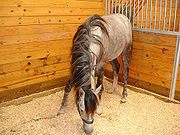
Horse Stall Mats
Stall mats are another issue. Not always are mats needed. In areas that have good drainage and especially when clay is on top of the base rock, not purchasing a mat may be just fine. If the ground is rocky or gravel covered, a mat may be required.
Horse stall mats can be either interlocking, flat edged, or a drain through variety. The drain through mats work well in a wash rack area of a barn. The best wash racks have a cement pad and a drain. Then the mats are laid on top. This reduces the chance of slipping for the horse. Also in the winter it keeps any ice that might form underneath the mats and out of harms way for the horse.
Another great use for the pass through mats is when a horse is injured. Sometimes stabling in required, but the horse cannot have any shaving or straw invade the wound area. In this case the pass through mats keep the moisture from puddling and still gives the horse a cushioned area to stand on.
Flat edged mats work well, but shift more than the interlocking ones. The heavier the mat the longer it will last. The grooves or ribbing on the back side of the mat help to keep it in place. Mats are preferred at times to help reduce the amount of bedding required and still yield plenty of pressure relief. The flat edged mat typically require two people to move and adjust. When installing mats in a new barn many times they have to be cut to size. A circular saw is very good for this job. Some simple cuts and the matting is installed. It is not a good idea to just lay one mat in the middle of the stall. Ideally the whole floor surface should be covered if a mat is going to be used. Mats are also very important for horse trailers.
Interlocking mats do not shift. They fit snuggling. And they reduce bucking and shifting of the flat edged mats. If you can afford them, they are usually the best choice.
Horse Feeders
Stall feeders are another issue. For grain, horse feeders can be as simple as using a normal water bucket hung in the stall. Another solution is a corner feeder. Two boards are screwed into the stall and then the corner feeder mounted on them. Another option is to install a swing out feeder. A swing out has a place for grain and hay. The grain part is very useful, but the hay is another matter. Whenever putting the hay into the manger it seems that half of it lands on the person doing the feeding. For more storage, one barn I visited build a small enclosed tack area under the swing out feeder. It’s triangle shape accommodated one saddle a few bridles.
Horse Stalls by Country Manufacturing
Horse Hay Feeders
For hay feeding, some barns build a wood feeder in the corner of the stall. This does keep it off of the stall floor so that is it not wasted. But any time a solid feeder is used, attention has to be paid that no old hay is left in the feeder where it could mold. Botulism is also a danger when air is on able to circulate. Other mangers mount on the wall and the hay can be pitchforked into it. Hay feeders do reduce the amount of waste and also keep the horse from eating off of the same area that it walks and urinates on. This also helps to reduce the injection of worms from the manure.
Horse Stall Fronts
On the front of a stall it is nice to leave a window for the horse to look out into the aisle. For nervous horses, this can make them settle down. The window should be at least five feet or higher so that a high strung horse does not try to jump out of it. Also the window should not take up the hole front of the stall. It should be limited to an area of about 36” wide.
Stall latched are varied. The most important factors are that they can be quickly unlatched and that the horse can’t open it. Slide bolts are common but they must be maintained so that they slide easily. Another option is to bolt a chain with a snap attached and then a smooth ring to the stall door. Some fancier latches would include a gravity latch. When the door closes it always latches. The only drawback to this is if the door slides shut and the horse panics and the person it trapped. Sometimes the simple snap on a chain is the best solution.
Automatic Horse Water
Horse stalls can also be built with heated waterers. Many times a waterer will be set between two stalls. These self waterers can save a lot of work in the winter months. Frozen buckets are a head ache and they reduce the amount of water the horse drinks. A few draw backs to the heated water is that it is impossible to monitor how much water a horse is drinking. Also in the case of strangles or a cold going around the barn, it is hard to keep horses from drinking after one another. When installing the waterers there needs to be some way to cover them if needed and a regular bucket hung.
Horses are treasures. Our job as equestrians, no matter the horse discipline you participate in, is to keep them as safe as possible. Horse stalls are just one part of meeting that goal of a happy horse. And as always, Thanks for reading! Sue
More Horse and Construction Information
- Pole barns designed for horse barns
Horses bring a lifelong attraction to many people. It is amazing how many people light up when I talk about my horses. I dont know how many times I have had people tell me they had a pony when they... - Horse Barns design elements for a shed row barn
Owning a horse is a dream for many. No matter if you are a small private barn or a larger horse facility, there are some very important design elements that should go into every horse barn. Horses are very... - Metal Buildings Durable and Multiuse
Metal Buildings from industrial parks to garages, have found wide acceptance. Uses include garages, homes, indoor riding arenas, industrial buildings, metal storage buildings, civic centers, airplane hangers,... - Log Home Company Comparisons
Log Home Suppliers, are they all the same? What options exist? How do you maximize your quality coupled with price? Let me tell you about our journey. Yes, I love log homes. Yes, I live in a log home. And... - Custom Homes, Location
Custom home locations- this to consider before ou build your custom home. Written by Sue Lemmon of Cowboy Log Builders LLC, Custom homes since 1997

